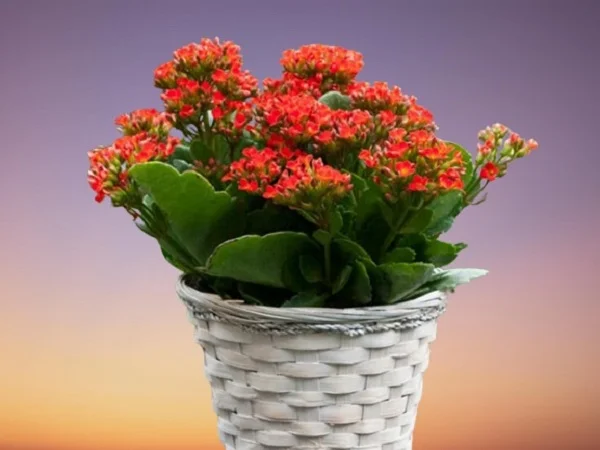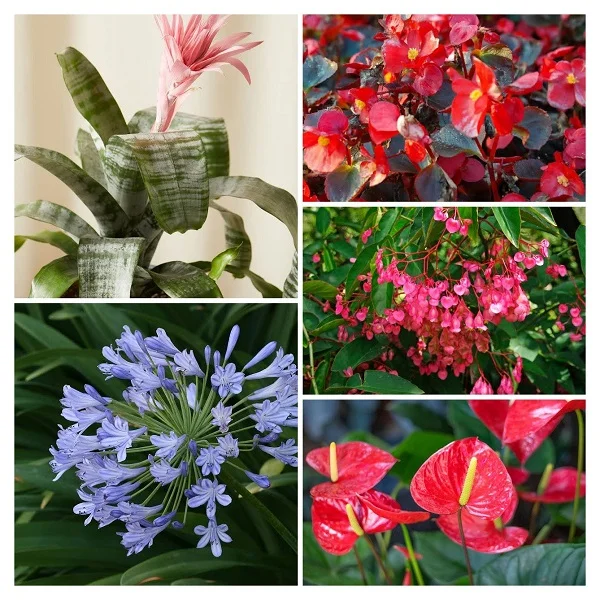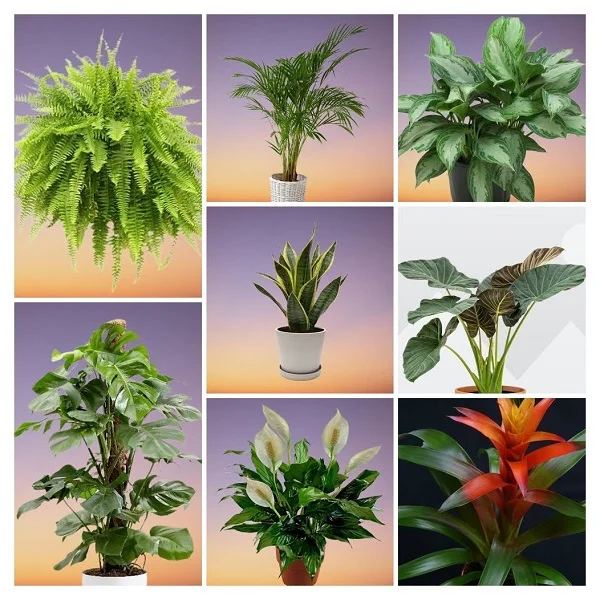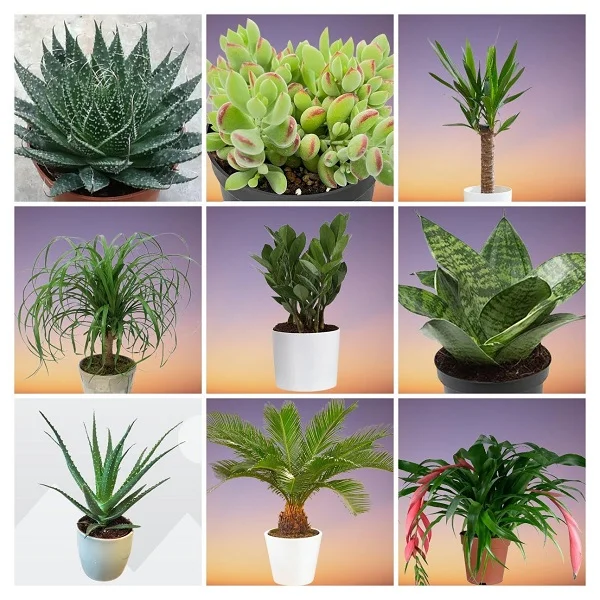How to Grow and Care for Kalanchoe blossfeldiana (Flaming Katy Plant) Indoors
Some links in this post may be affiliate links
Flaming Katy Plant (Kalanchoe blossfeldiana) thrives in bright light with some direct sunlight, average warmth, moderate humidity and moderately moist, rich, well-drained soil coupled with fortnightly feeding in the growing season.
Kalanchoe blossfeldiana also called Christmas Kalanchoe, Florist Kalanchoe or Madagascar Widow's-thrill is one of the popular Kalanchoe varieties and bears attractive, long lasting flowers which can be induced in any season and reddish leaves in bright light.
Christmas Kalanchoe is one of the best succulent plants on account of its magnificent flowers and ease of care which place it among the popular plants for the front porch or entrance where it will create a great first impression.
Kalanchoe blossfeldiana is a delightful, succulent, bushy, holiday-plant and is one of the best mother's day plant gifts.

Botanical name: Kalanchoe blossfeldiana
Family: Crassulaceae
Common names: Flaming Katy Plant, Christmas Kalanchoe, Florist Kalanchoe, Madagascar Widow's-thrill
Origin
Kalanchoe blossfeldiana is native to Madagascar.
Size
Christmas Kalanchoe can grow to a height of 1-2 feet and a spread of about 1.5-2 feet in about 2-5 years.
Varieties
There are many varieties of Flaming Katy available like Bali with red flowers, Mistral with lilac flowers, Fortyniner with yellow flowers, Tarantella with orange flowers and Vesuvius with red flowers.
Miniatures of Florist Kalanchoe which are more compact, growing to about 6 inches high and bearing red flowers are also available. The miniatures include Compact Lilliput, Tom Thumb and Margarethe. There is one that can be raised from seed, the Vulcan hybrid.
Toxicity
The American Society for the Prevention of Cruelty to Animals has listed Kalanchoe Plants as toxic to animals. They contain Calcium glycosides which are toxic to animals. Keep the plants away from the reach of children and pets to avoid any mishaps.
Where to Buy
Flaming Katy plants are beautiful plants to add to your collection, you may obtain these plants online from Amazon (Link to Amazon) or from Etsy (Link to Etsy).
Caring for Kalanchoe blossfeldiana Indoors
With the right care, Flaming Katy can bloom for months, bringing color and beauty to your indoor space. This guide covers light, watering, humidity, fertilization, propagation, repotting, common problems, and FAQs to help your Kalanchoe thrive indoors.
Kalanchoe blossfeldiana blossoms in bright light with 4-6 hours of direct sunlight, average warmth of 15-280C, moderate humidity of 50-55% and moderately moist, fertile, well-drained, succulents soil coupled with fortnightly feeding during the growing season.
Flaming Katy Plant care requires annual repotting at the beginning of the growing season. Pruning is needed to keep it neat as well as promote flowering. Keep on reading for more on these growing conditions and how to achieve them.

Watering
Water your Flaming Katy Plant liberally during the growing season and allow the top 2-3 inches of soil to dry out between waterings. Keep the soil moderately moist but not soggy to avoid rotting, yellow leaves and leaf drop.
Cut down on watering in the cold period to maintain the soil almost dry as growth is reduced at this time. Do not allow the soil to dry out completely to prevent wrinkled, dry leaves, and drooping.
Ensure that the pot has a drainage hole to prevent the soil from getting soggy as it can lead to root-rot. To avoid shocking this tropical plant which can result in reduced growth, water it with tepid water (water that is at room temperature).
Use chlorine-free water and water at the base to avoid wetting the foliage as it can encourage fungal diseases.
Light Requirements
Flaming Katy grows best in bright light with at least 4-6 hours of sunshine per day to encourage flowering. If light is not enough, it will become leggy with wide spaces between the leaf and will not bloom.
Therefore, if the natural light is not sufficient, you may grow Kalanchoe blossfeldiana under a grow light. Take a look at these full spectrum grow lights on Amazon.
Turn the pot regularly to ensure the plant receives light on all sides to encourage even growth to prevent leggy growth.
Temperature and Humidity
Average warmth of 15-280C is ideal for Flaming Katy. Keep it away from cold drafts to avoid sudden drops in temperature as they can lead to wilting and leaf drop.
Kalanchoe blossfeldiana has no need for extra humidity. Moderate room humidity of 50-55% is adequate for this plant. Avoid misting, as excessive humidity can cause fungal issues.
Clean the leaves by wiping with a damp soft cloth to get rid of dust and discourage pest and disease infestations. Ensure that there is good air circulation and do not allow drops of water to remain on the leaves to prevent fungal diseases.
Potting Medium
Flaming Katy soil should be rich in organic matter, loose and free-draining to avoid getting soggy soil. The soil should be loose enough to allow water to drain out fast enough. Cactus and succulents mixes are perfect for the plant.
Fertilizer
Feed your Flaming Katy with a phosphorous-rich, water-soluble fertilizer every 2-3 weeks when the plant is actively growing (during the growing period) to promote flowering.
Withhold feeding in the cold season as the plant is in the dormant stage and feeding at this time can lead to fertilizer burn which presents with brown leaf tips and slow growth.
Repotting
Repot Flaming Katy every year after the rest period (cold season). Use a pot one size larger than the current one. Make sure that the pot has a drainage hole to prevent the soil from getting soggy as it can lead to root-rot. Do not repot a plant that is in flower as the repotting shock can shorten the flowering period. Check out these terracotta pots with saucer on Amazon.
Pruning
Pruning Flaming Katy involves removal of dead leaves and flowers to maintain the plant clean and neat. Trim leggy or stretched stems to keep the plant bushy. Prune the tops after flowering is over to encourage a second bloom cycle.
Keep the soil almost dry for a month and then position the plant in a spot with bright light and water normally. Doing so will initiate more flowering for Christmas Kalanchoe.
How to Encourage Flaming Katy to Rebloom
Flaming Katy is a short day plant. This means that it requires a rest period of short days of 6 weeks to hasten flower bud formation.
To achieve this, place the Florist Kalanchoe in a dark cupboard or cover it with an opaque cardbox for 14 hours per day for 6 weeks. Alternate this with bright light for 10 hours per day during this period.
Keep the plant warm, away from drafts and do not feed or water it during this rest period.
When the flower buds appear, at the end of the 6 weeks rest period, move the plant to a brightly-lit place, water and feed it, and resume routine care.
Using this method, you can trick the Flaming Katy to bloom at any time of the year.
Kalanchoe blossfeldiana Propagation
Flaming Katy propagation is best done at the beginning of the growing season from stem cuttings or leaf cuttings either in water or in soil.
Learn more on how to propagate Kalanchoe blossfeldiana (Florist Kalanchoe Propagation).

Flaming Katy Problems and Remedies
Flaming Katy problems include drooping leaves, yellowing and dropping leaves, leggy growth, leaf spots, lack of blooms, pests among others. Read on for more on these problems and how to fix them.
Moldy leaves and flowers
Moldy leaves and flowers in Flaming Katy are an indication of powdery mildew which is enhanced by overwet conditions coupled with poor air circulation. Cut off the diseased parts and keep the plant warm while ensuring that there is good air circulation.
Isolate the affected plant to avoid spread to the other plants and treat it with neem oil as per the manufacturer's recommendations. Thereafter, do not mist or wet the plant as moisture on the foliage creates suitable conditions for this disease.
Brown soft leaf spots
Flaming Katy brown soft leaf spots is an indication of leaf spot disease which is prevalent in wet conditions coupled with poor air circulation. Treat the affected plant for the disease. To reduce future infestation, avoid wetting the foliage during watering or water the plant from the bottom and ensure that there is good air circulation at all times.
Pests
Flaming Katy is prone to spider mites, scale insects and aphids. Isolate the affected plant to avoid spread to the other plants and treat it with neem oil or insecticidal soap as per the manufacturer's instructions.
Rotting base, yellowing and shrivelled leaves
Flaming Katy rotting base followed by yellowing and shrivelled leaves is an indication of basal stem-rot disease which is promoted by overwet conditions. Avoid soggy soil by ensuring that the pot has a drainage hole and the soil is free-draining.
Lack of blooms
One of the possible reasons for lack of blooms in Flaming Katy is too little light. Move the plant to a brighter spot where it will receive bright light with at least 4 hours of sunshine per day or instal a grow light where the natural lighting is not sufficient. Check out this guide on understanding light for houseplants.
The second possible reason why Flaming Katy will not flower is feeding it with a nitrogen-rich fertilizer which promotes foliage growth at the expense of flowering. Feed the plant with a phosphorous-rich, water-soluble fertilizer every 2-3 weeks during the growing season to promote flowering. Read more on how to feed houseplants.
The third possible reason Christmas Kalanchoe is not flowering is underwatering. Water the plant thoroughly during the growing season and allow the top 2-3 inches of soil to dry out between waterings. Decrease watering during the cold season to maintain the soil slightly moist but do not let the soil dry out completely. Learn more on how to water houseplants correctly.
Drooping leaves
Flaming Katy drooping leaves is due to underwatering. Immediately water the plant thoroughly and it should perk up. Thereafter, water the plant thoroughly during the growing season while allowing the top 2-3 inches of soil to dry out between waterings. During the cold season, water the plant very infrequently but never allow the soil to dry out completely.
Losing (dropping) leaves
Flaming Katy losing (dropping) leaves is due to watering it with very cold water which has caused shock to the plant. Water the plant with tepid water (water that is at room temperature) to avoid plant shock for this tropical plant.
Underwatering is another reason why Christmas Kalanchoe is losing (dropping) leaves. Water the plant thoroughly and allow the top 2-3 inches of soil to dry out between waterings to keep the soil moderately moist. Reduce watering in the cold months and maintain the soil almost dry but never allow the soil to dry out completely.
Leggy stems
One reason for leggy stems in Flaming Katy is overwatering during the cold season. Significantly reduce watering in the cold season as growth is reduced at this time and maintain the soil almost dry.
The second reason for Christmas Kalanchoe leggy stems is too little light during the growing season. Position the plant in a brighter spot and ensure it is receiving bright light with at least 4 hours of sunshine per day or instal a grow light if the natural lighting is not adequate.
Wilted and discolored leaves
Flaming Katy wilted and discolored leaves are due to soggy soil brought about by overwatering or too much water in the soil in the cold period. Significantly reduce watering in the cold season and maintain the soil almost dry. In addition, make sure that the pot has a drainage hole and that the soil drains easily to prevent it from getting soggy.
Brown dry leaf spots
Flaming Katy brown dry leaf spots are due to underwatering in the growing season. Water the plant liberally during the growing period while allowing the top 2-3 inches of soil to dry out between waterings to keep the soil moderately moist. Never allow the soil to dry out completely.
Conclusion
Kalanchoe Blossfeldiana (Flaming Katy) is a low-maintenance, vibrant houseplant that thrives with minimal watering and bright light. By following these care tips, you can enjoy long-lasting blooms and healthy growth year-round.
Frequently Asked Questions
1. How long does Kalanchoe Blossfeldiana bloom?
With proper care, each bloom cycle in Kalanchoe Blossfeldiana can last 6-8 weeks.
2. Can Kalanchoe grow in low light??
No, Kalanchoe needs bright light with at least 4 hours of sunshine per day for compact growth and blooming.
3. Is Kalanchoe toxic to pets?
Yes, Kalanchoe is toxic to cats and dogs if ingested. Keep it out of reach of pets.
4. Should I mist my Kalanchoe?
No, misting Kalanchoe can cause fungal issues. It thrives in dry air.
You liked it? Share on social media.
Related Content
Amazon Associates Disclosure
Homeplantsguide.com is a participant in the Amazon Services LLC Associates Program, an affiliate advertising program designed to provide a means for sites to earn advertising fees by advertising and linking to amazon.com.





